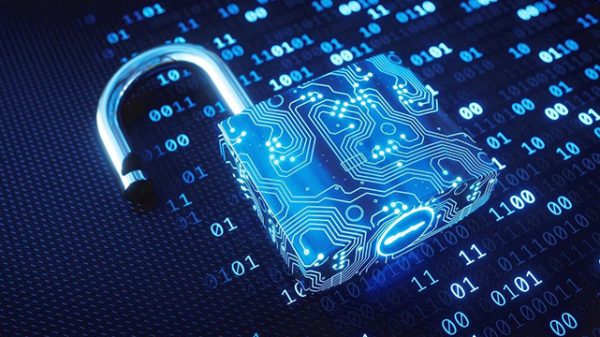Microtransaction: Business Model For Purchasing In Gaming
Key Takeaways:
Microtransactions, widely adopted in various video game genres, offer players exclusive items or shortcuts, enhancing the gaming experience. These transactions provide developers with significant revenue for updates and content additions, ensuring accessibility to all players. Critics voice concerns about potential pay-to-win dynamics and exploitative practices targeting vulnerable players. To avoid pitfalls, prioritize games offering a complete experience for a single upfront payment. Balancing monetization with player satisfaction is crucial in the evolving landscape of social gaming.Have you heard of a business model called Microtransaction for buying and selling virtual goods? Are you interested in learning more about this online transaction model?
Microtransactions, prevalent across various genres of video games, have seen widespread adoption in recent years. Developers have embraced this revenue model from smartphones to consoles and PC games for its lucrative potential.
Many companies, especially in smartphone gaming, offer games for free. They make money through microtransactions instead of charging for the game upfront.
We will focus on Microtransactions for virtual goods and gaming in general! Let’s start with its definition, shall we?
What is the Microtransaction definition?
Microtransactions (MTX) are small payments that allow users to buy virtual goods in games. It’s a specific business model.
Developers of free-to-play games earn money from in-app purchases. They commonly integrate in-app purchases into mobile apps, PC games, and console games.
Understanding Microtransactions in Gaming: Balancing Revenue
Some games feature microtransactions, often referred to as “freemium.” Critics may criticize these games as “pay-to-win” if purchasing in-game items grants players an unfair advantage.
These transactions are popular among players who need more time or skill to earn items in the game. This helps developers generate revenue.
Loot boxes are like an online purchase where you don’t know what you’ll get. This can make players to spend a lot of money and worry about gambling, especially young people.
They can contain cosmetic or functional items, sometimes including exclusive
microtransaction-only items. To ensure fairness, developers may limit these purchases to cosmetic items.
Psychological and Regulatory Concerns
The ongoing use of microtransactions, especially by children, raises complex psychological and regulatory issues. Transactions typically occur within in-app stores, with platforms like Apple and Google taking 30% of the revenue.
A brief history of Microtransaction model development
Initially, microtransactions in games involved players exchanging real money for virtual currency. In the Double Dragon 3: The Rosetta Stone (1990) arcade game, players could use coins to purchase upgrades and items.
This model gained traction in South Korea with games like QuizQuiz (1999) and MapleStory (2003). In the early 2000s, people could buy virtual items with real money in online worlds like Habbo Hotel and Second Life.
These virtual worlds enabled users to buy items with real money. Examples of such virtual worlds include Habbo Hotel and Second Life.
What was the first microtransaction?
In 2006, “The Elder Scrolls” series started selling cosmetic horse armour for $2.50, a new idea from Bethesda. Initially, players questioned the reasoning behind paying for a virtual cosmetic item.
Since 2017, games such as Fortnite have been using loot box microtransactions. Players can purchase weapon skins and other items using real money.
Despite criticism, game developers like Electronic Arts and Activision Blizzard earned billions from microtransactions. Games like Fortnite provide cosmetic purchases, though some accuse them of being “pay-to-win.
Examples of Microtransactions
Here are some of the most picturesque types of these business model transactions:
Pay for Plot Progression
Certain games withhold plot progression behind paywalls, requiring additional purchases to access the full story. Asura’s Wrath is a notable example of this practice, prompting scrutiny over publishers’ motivations and player experiences.
Bonus Purchases
Game developers create additional content for profit, often in mobile games, to improve the player’s experience with cosmetic enhancements.
They commonly use countdown clocks to promote bonus purchases, attracting customers with limited-time offers.
XP Boosters
Some games offer XP boosters for a fee, helping players level up faster. This can give an advantage but also raises fairness issues.
Call of Duty: Black Ops 4 faced criticism for having loot boxes that contain powerful in-game items. These items provide players with an advantage over others.
Loot Boxes
Loot boxes are like gambling, giving random rewards for money. Critics criticize them for being addictive and exploitative. Star Wars: Battlefront 2 faced backlash for its pay-to-win model, prompting changes after public outcry.
Character Skins
Game developers commonly offer character skins for purchase, typically as cosmetic enhancements, adding personalization to gameplay.
However, games like Destiny 2’s Dawning event faced criticism for locking desirable skins behind expensive paywalls.
Pay-to-Unlock
Pay-to-unlock microtransactions allow players to purchase access to specific content, potentially hindering progress for non-paying players. Street Fighter V’s character releases and surprise mechanics exemplify this model.
Limited Use Items
Some games charge a fee to replenish items. This feature benefits players who prefer to spend time on something other than grinding. It allows them to progress more quickly in the game.
What is Microtransactions Simulator all about?
Microtransactions Simulator is a game where players unlock achievements, improve loot, and upgrade their shop without spending huge amounts of money.
No longer will players need to invest extra funds in season passes or endure endless grinding for coveted items.
Players in this new version of a clicker game embark on a fun adventure. They unlock achievements, collect loot, sell treasures, and upgrade their shop.
What are its features?
In this simulator, you can expect features such as:
Thrilling quests offering valuable loot An array of new achievements to conquer A diverse range of loot types beyond mere cards Whimsically frivolous items.Also, players can immerse themselves in the experience with enchanting music curated by the talented Michael Brock Li. Get ready for boundless entertainment without denting your wallet in the Microtransactions Simulator!
How to avoid Microtransaction scams?
If you’re interested in pursuing this type of microtransaction tricks but avoid scams, you should know the following:
One must exercise caution and foresight to avoid the pitfalls of microtransactions in free-to-play (F2P) mobile and PC games. Before delving into a game, evaluating certain key aspects is imperative: Does it mandate constant internet connectivity?
Will microtransactions lead to recurrent spending? Are there plans for a sequel that could nullify one’s investments? Can players thoroughly enjoy the game without resorting to additional purchases?
Prioritizing Long-Term Value
Since 2005, many free-to-play games have come and gone because microtransactions are not sustainable. It’s best to play games you pay for upfront and receive the complete experience.
Avoid games that require in-app purchases for full enjoyment.
These types of games can be frustrating and costly in the long run. Stick to games that offer a one-time payment for the full game.
This approach ensures sustained enjoyment without reliance on online connectivity or server upkeep. In today’s gaming world, playing games with lasting value that don’t need microtransactions for enjoyment is crucial.
Pros and cons of Microtransaction in Social Gaming
Microtransactions in social gaming have both advantages and disadvantages. Let’s explore them:
Pros
Enhanced Gameplay: Microtransactions offer exclusive items and shortcuts, enhancing the gaming experience. Revenue for Developers: They provide a significant revenue stream, supporting ongoing updates and content additions. Accessible to Everyone: Players are able to enjoy the game without spending money, as microtransactions are usually optional.Cons
Pay-to-Win Dynamics: Spending more money can create unfair advantages, leading to frustration among non-paying players. Exploitative Practices: Some tactics, like limited-time offers or loot boxes, may exploit vulnerable players. Fragmented Experience: Microtransactions can divide the player community and limit enjoyment for non-paying players.Balancing monetization with player satisfaction is crucial in the evolving landscape of social gaming.
Bottom line
In conclusion, microtransactions have become a prevalent aspect of the gaming industry, offering advantages and disadvantages.
Game developers make money from microtransactions, but some people worry they are unfair and exploit players.
Gamers should be cautious when playing online games with microtransactions, as they can impact gameplay and enjoyment over time.
Prioritizing games that offer a complete experience for a single upfront payment can help mitigate potential pitfalls associated with microtransactions.
This method helps players around the world make smart choices about their gaming and how much money they spend.
Ultimately, striking a balance between monetization and player satisfaction is essential for the continued evolution of social gaming.
Game companies must address these issues to ensure players have a positive gaming experience. This is especially important in PC games that include microtransactions.
The post Microtransaction: Business Model For Purchasing In Gaming appeared first on FinanceBrokerage.
























